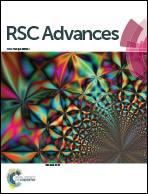Potential applications of abandoned aromatic polyamide reverse osmosis membrane by hypochlorite degradation
Abstract
Reverse osmosis (RO) membranes might experience significant changes in surface structure and performance after disinfection has been applied, or after membrane cleaning, because of hydrolysis and oxidation processes. This study reports potential applications of aromatic polyamide RO membrane exposed to a sodium hypochlorite solution for desalination of dye solutions. Changes in the chemical composition, morphology and performance of such membrane were characterized by Fourier transform infrared spectroscopy (FT-IR), X-ray photoelectron spectroscopy (XPS), contact angle measurements, scanning electron microscope (SEM), atomic force microscopy (AFM) and streaming potential measurements. After chlorination, the water flux of RO membrane doubled, and the NaCl and Na2SO4 rejection of the RO membrane decreased to 46.2% and 86.2%, respectively. However, the rejection of congo red, methyl blue and direct red 80 were 99.4%, 98.0% and 100%, respectively. This indicates that abandoned RO membranes can be recovered as “nanofiltration functional membranes” after sodium hypochlorite exposure, and be suitable for fractionation purposes.


 Please wait while we load your content...
Please wait while we load your content...